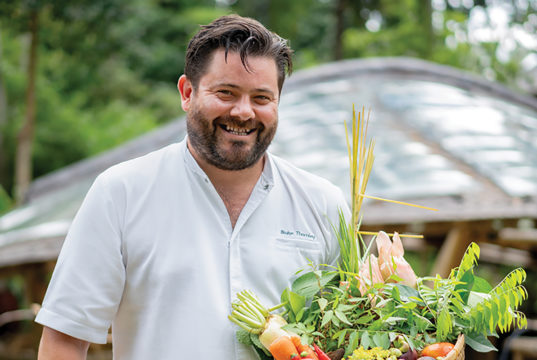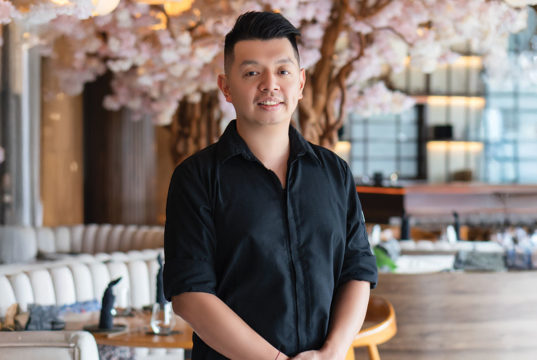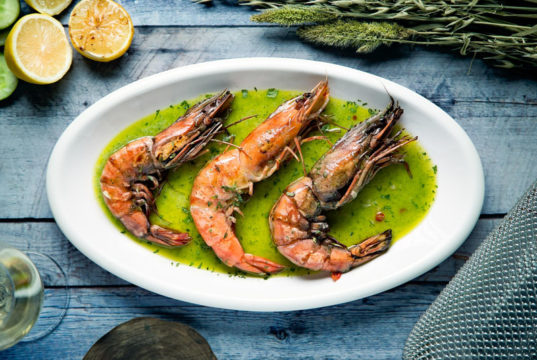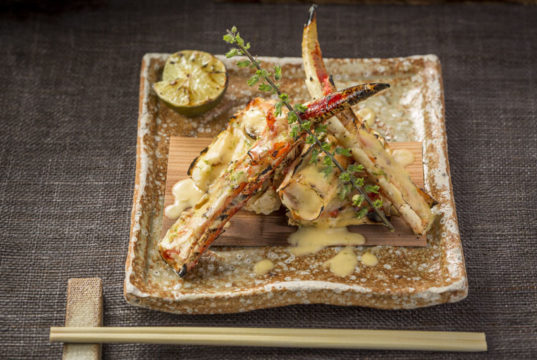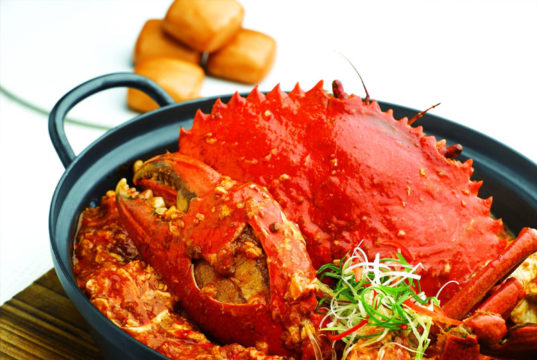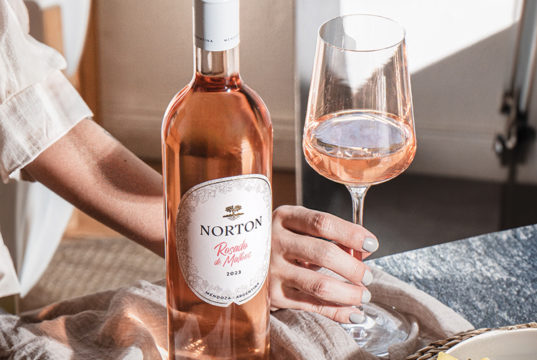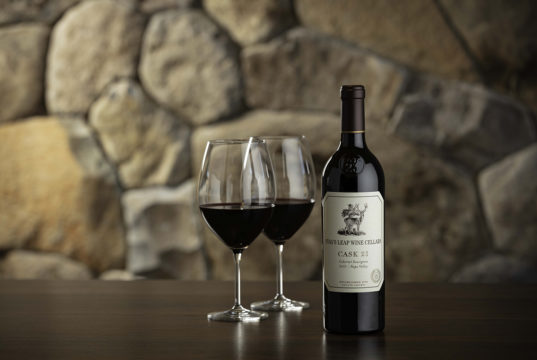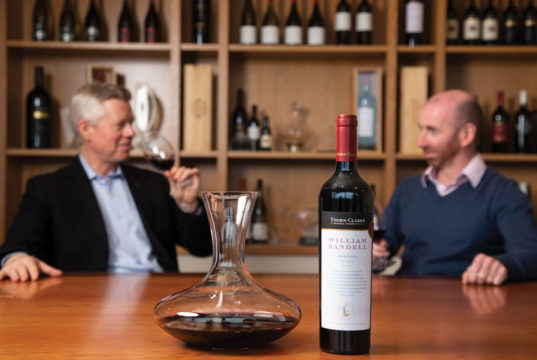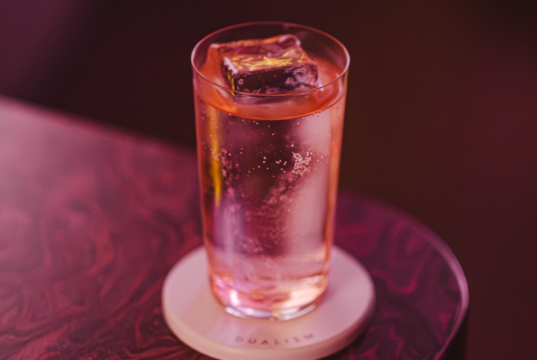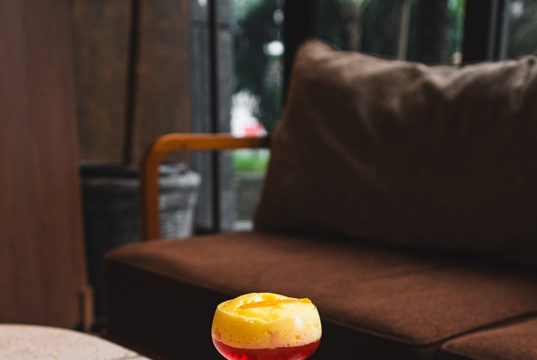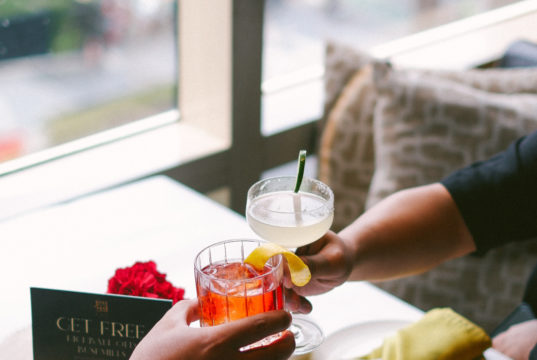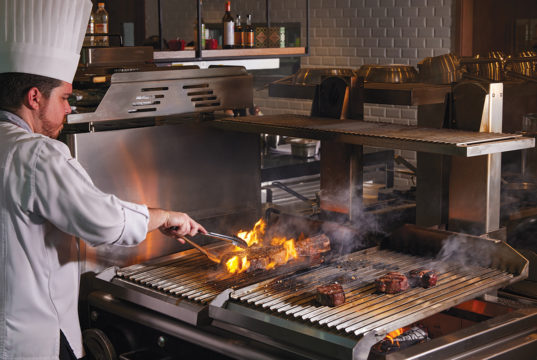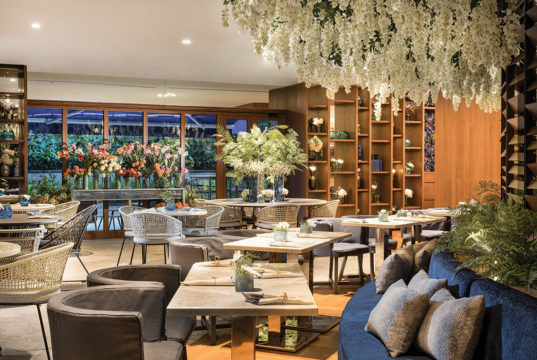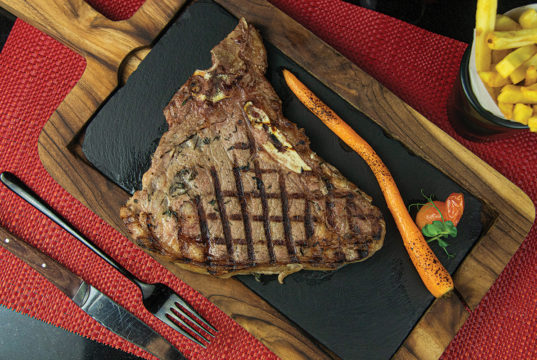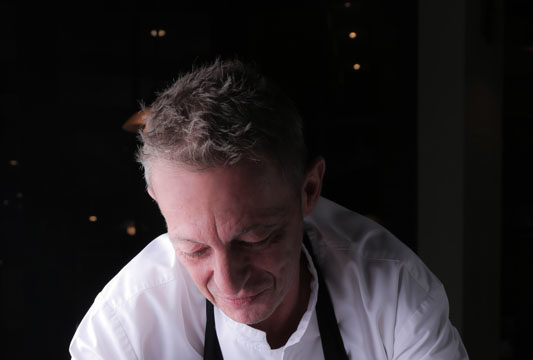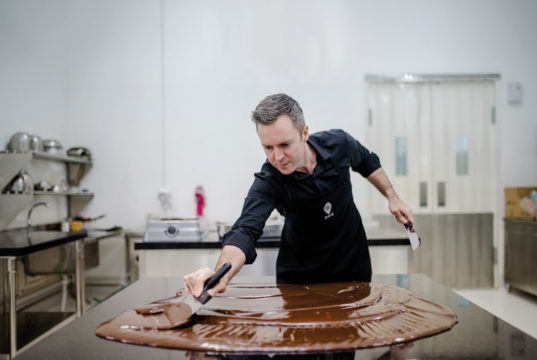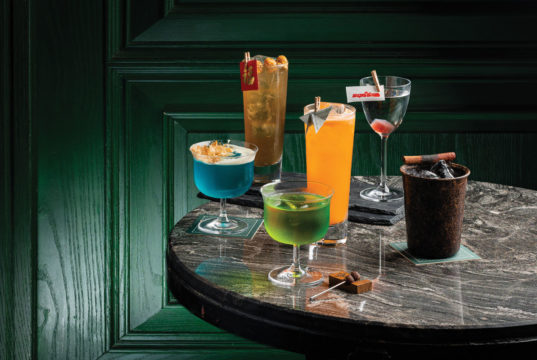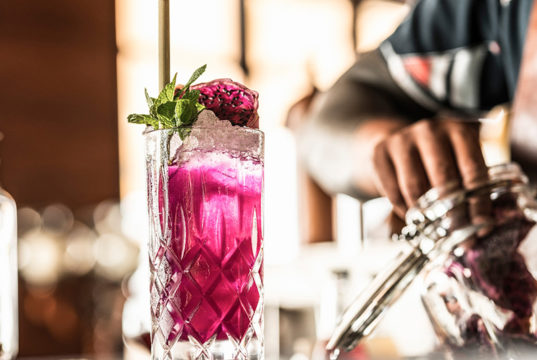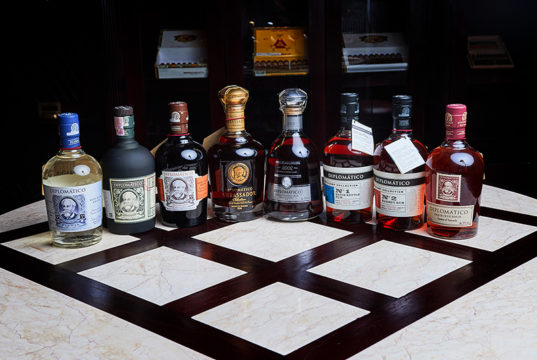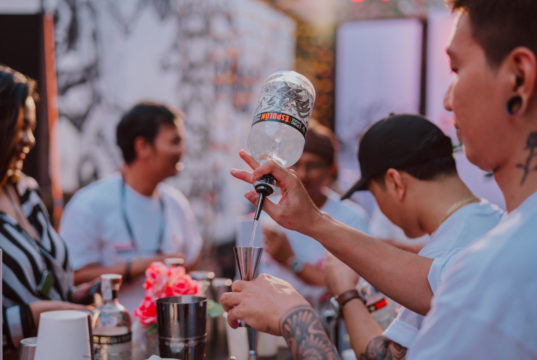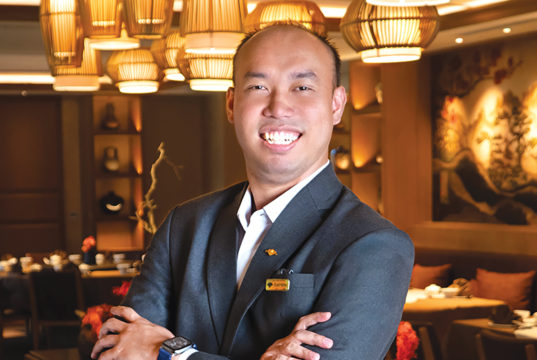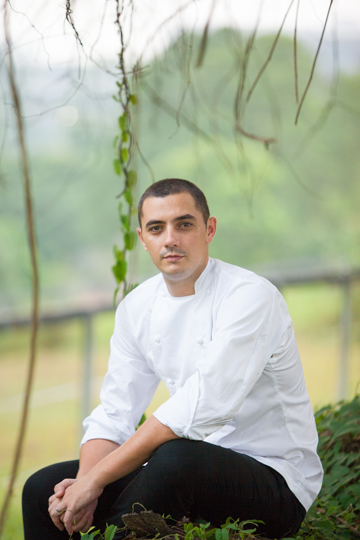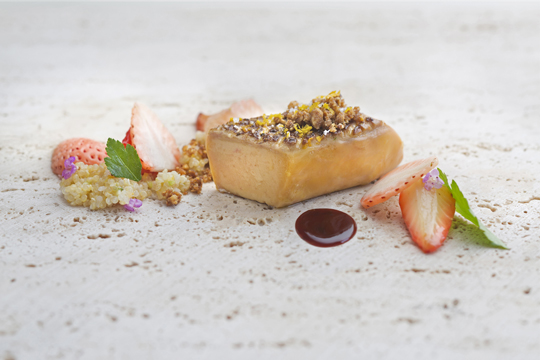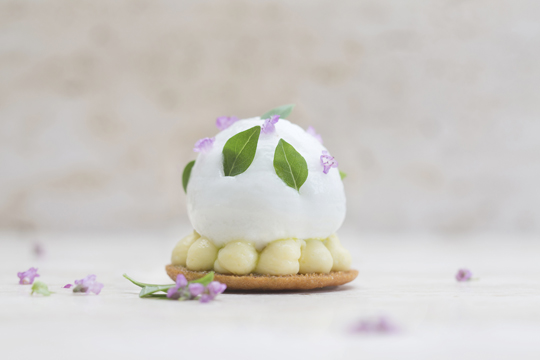The renowned executive chef, previously at JAAN and now the co-owner of Singapore’s finest new restaurant, Odette, reveals what it was like building a legacy for one of Asia’s most successful restaurants, why respecting produce and seasonality is key to fine dining, and why our childhood contact with food shapes our tasting experiences for the rest of our lives.
–
By Louise Newsham
E : Today you’re one of Asia’s most celebrated and successful chefs, but what first enticed you into the kitchen?
A: My family used to have a small farm in a rural part of central France, so growing up on the farm really taught me to live by the seasons. We didn’t have a big supermarket to shop at, so we would only eat what we produced. I was lucky enough to grow up in this kind of environment, where all of my family, especially my mum and my grandmother, knew how to make everything from scratch, from cheese and butter to bread and baked goods. They knew real cooking. That’s when it really clicked for me, when I learnt that serving simple, honest food could bring so much pleasure.
E : Your restaurant, Odette, is actually named after your grandmother, but who else has inspired you throughout your cooking career?
A: What really inspires me about chefs is not only their technique or their skill, but the approach they use when it comes to produce: how they work with the seasons and how they use a smart, sustainable approach. So for that reason I would say Michel Bras, a three Michelin-starred chef who teaches nose-to-tail cooking. But beyond that, I believe it is the taste education you receive as a child that determines how you taste, see and smell for the rest of your life. That is more important than any Michelin-star training.
E : Originally from France, you’ve now become a household name in Singapore thanks to the legacy you helped create at JAAN – a restaurant that regularly hits the top spot in Asia’s 50 Best Restaurants awards. What was it like being part of such a famous restaurant?
A: It was truly fantastic. JAAN is perfect for any young chef who really wants to make a name for themselves – a place where chefs can really expand their culinary horizons. It was a great platform to expand my cuisine and show what I can do. They basically gave me six months to prove myself and within those six months the restaurant became full every day. Four years later, after I had built a great team, trained them, taught them my recipes and watched them grow, it was the perfect time to bring my team with me to open Odette.
E : Odette is the latest modern French fine-dining restaurant to open in Singapore, already slated to become a number one restaurant in Asia. Can you
tell us a little bit about the concept?
A: The concept is very simple. We aim to deliver honest food that celebrates seasonal produce and at the end of the day, makes people happy. When you go to a restaurant, you not only want great food, but also great service, a great wine list and an enjoyable experience, from the first step into the restaurant to the last petit four. That’s what we always strive to achieve at Odette.
“That’s when it really clicked for me, when I learnt that serving simple, honest food could bring so much pleasure.”
E : We’ve heard you still hold a lifelong respect for seasonality, terroir and artisanal produce, and you incorporate this philosophy into your cuisine at Odette. How exactly do you do this?
A: Seasonality, terroir and artisanal produce have been very close to my heart ever since childhood, so I always try to make the produce and the farmer shine by using simple cooking techniques. The star of the restaurant is not the chef – the star is always the produce and the great, hardworking farmer behind it.
E : We can’t wait to try your creations at Odette – what can we look forward to?
A: The cuisine is always revolving and evolving with the seasons, but right now we have a wonderful dish called Mushroom Tea – a very simple but very tasty and intense cappuccino of mushrooms. For the main course, I really love the pigeon, and for dessert, we have a cool version of a lemon tart – it’s super sexy, super light, almost no added sugar. You have to try it.
E : Have you tweaked any of your modern French recipes to suit Asian palates?
A: Yes, because you have to adapt the cuisine to where you are. I wouldn’t serve the same food in Paris as I would in New York, Bali or Singapore. You have to please your guests as that’s ultimately the number one priority. For example, I’ve noticed that in Singapore most of our clientele have quite wild, masculine tastes. They like food that’s smokey, chargrilled and filled with umami flavours.
E : This year you’ll stand as mentor and judge at the San Pellegrino Young Chef 2016 competition. What advice will you be giving to these budding kitchen enthusiasts?
A: I think nowadays the most important thing is not to follow the trends. Do what you believe in, and always be honest in what you do.
E : And finally, what advice would you give to foodies in Asia, looking to get a taste of the region’s very best cuisine?
A: There’s so much to try and discover here in Asia. It’s one of the best places in the world for culinary diversity. Thai is one of my favourite cuisines after French and Japanese food, but wherever you go it seems you can find cheap, simple street food that just blows your mind. If it’s fine dining you’re looking for, in Hong Kong try Amber at The Landmark Hotel, try Shinji by Kanesaka in Singapore and in Tokyo try RyuGhin by Chef Yamamoto.
Julian Rayer
Lemon Tea Tart
For the Lemon Pastry Cream
500g milk, 2 lemons, zested, 120g egg yolks, 100g sugar, 40g corn starch, 80g butter
Method
1. In a medium pot, heat the milk until warm to touch, about 60°C.
2. Add the lemon zest and allow the mixture to infuse for 10 minutes.
Strain the infusion into another pot.
3. In a small bowl, whisk to combine the eggs, sugar and cornstarch. Slowly
pour the lemon-milk infusion into the bowl and whisk until well-mixed. Place the combined mixture into the pot and heat to 60°C. Stir until thickened.
4. Remove the mixture from the stove and add butter, whisking
till well combined.
5. Allow the mixture to cool to room temperature before
transferring into a piping bag.
For the Lemon Curd
200g sugar, 10 eggs, 4 lemons – zested, 400g
lemon juice, 2 gelatine sheets, 680g diced butter
Method
1. Combine the sugar, eggs, lemon zest and juice in a double boiler.
Allow the mixture to cook for about 10 to 12 minutes, whisking
often till the mixture has thickened.
2. Separately, soak the gelatine in a medium-sized bowl filled with iced
water for 5 to 10 minutes. Once soft, remove gelatine sheets from
water and squeeze out excess liquid.
3. Remove the sugar-egg mixture from the heat and add the softened
gelatine. Whisk in the diced butter, one piece at a time, until smooth.
4. Strain and refrigerate overnight in an airtight container.
5. Before use, place lemon curd in a stand mixer fitted with a paddle
attachment and beat until smooth. Transfer into a piping bag.
For the Brittany Shortbread
170g butter, 85g egg yolks, 170g caster sugar,
235g flour, 8g baking powder, 2g salt
Method
1. Cream the butter, egg yolks and sugar together in a stand mixer fitted
with the paddle attachment. Slowly add the dry ingredients until well combined.
2. Remove the mixture and divide the dough into 200g portions. Cling
wrap the individual dough portions and allow them to rest in the fridge overnight.
3. Remove the dough from the fridge and allow it to return to room
temperature.
4. Roll the dough out into a sheet, about 4mm thick. Cut the dough
with a round cutter (approximately 5cm wide) and bake in a
pre-heated oven at 165°C for 7 minutes.
For the Lemon Meringue
290g lemon juice, 150g threalose,
25g albumina powder, 90g sugar
Method
1. Combine all the ingredients in the bowl of a standard mixer fitted
with the whisk attachment. Whisk at medium speed for 20 minutes, until stiff peaks have been achieved.
2. Transfer mixture into a piping bag and pipe into droplets. Place the
meringue drops into a dehydrator for 3 hours at 57°C.
For the Lemon Basil sorbet
500g water, 400g sugar, 750g sparkling water, 120g fresh basil leaves, 200g egg white, 250g lemon juice
Method
1. In a pot, bring the water and sugar to boil.
Once the sugar has dissolved, remove the pot from the stove and let
the mixture cool to 60°C.
2. Add cold sparkling water and mix well.
3. With a hand blender, blitz the basil leaves with enough sugar-water
mixture until the basil leaves are finely blended. Combine all the ingredients and continue to blitz with the hand-blender.
4. When well combined, pour 600g portions into individual
Paco Jet Bowls and freeze overnight.
For the Lemon Espuma
500g water, 150g sugar, 8g pectin NH95,
3 gelatine sheets, 200g lemon juice, 120g egg whites
Method
1. Combine the water, sugar and pectin in a
pot and bring it to a boil. Remove the pot from the heat, once the sugar and pectin have fully dissolved.
2. In a separate medium-sized bowl filled with
iced water, soak the gelatin for 5 to 10 minutes. Once soft, remove gelatine sheets from water and squeeze out excess liquid.
3. Add the softened gelatine sheets into the still warm syrup and mix till
dissolved. Allow the solution to cool and add lemon juice and egg whites. With a hand blender, blitz till well-combined.
4. Place the mixture into a siphon with two gas chargers and place the
siphon aside until the dish is ready to be assembled.




